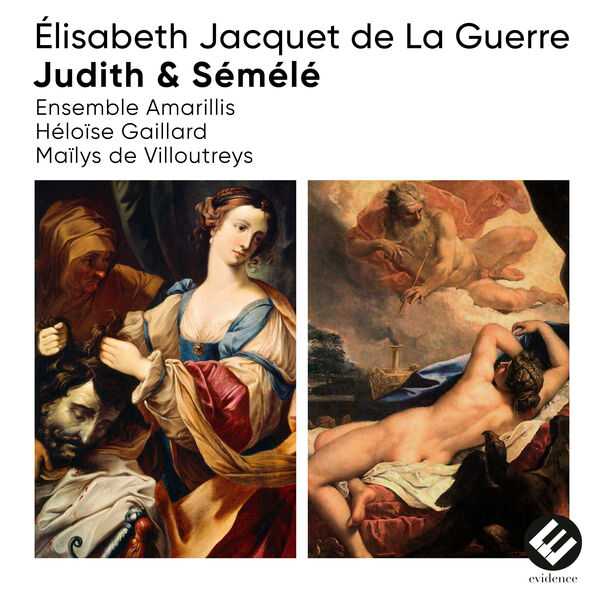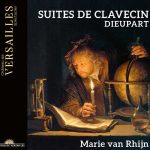

Composer: Elisabeth Jacquet De La Guerre
Performer: Ensemble Amarillis, Maïlys De Villoutreys, Héloïse Gaillard, Alice Piérot, Marie Van Rhijn, Eleanor Lewis-Clouet, Marc Wolf
Conductor: Héloïse Gaillard
Format: FLAC (tracks)
Label: Evidence
Catalogue: EVCD088
Release: 2022
Size: 1.07 GB
Recovery: +3%
Scan: yes
Sémélé (Cantates françoises, 1715, No. 1)
01. Symphonie d’ouverture. Marquez
02. Récitatif «Jupiter avait fait un indiscret serment»
03. Air «Ne peut-on vivre»
04. Prélude. Bruit
05. Récitatif et air «Mais quel bruit étonnant se répand… Quel ravage»
06. Lentement et marquez «Quel appareil pompeux»
07. Symphonie. Air gracieusement «Quel triomphe»
08. Prélude. Bruit
09. Récitatif et air «Ah ! quel embrasement… Je vois ce palais s’enflammer»
10. Aria affettuoso (from Trio Sonata No. 3 in D Major)
11. Dernier air «Lorsque l’amour nous enchaîne»
12. Trio Sonata No. 4 in G Minor
Judith (Cantates françaises sur des sujets tirés de l’Écriture, Livre I, 1708, No. 6)
13. Symphonie d’ouverture
14. Récit «Tandis que de la faim»
15. Air «La seule victoire»
16. Récit «Enfoncez le trait qui le blesse»
17. Sommeil. Lentement
18. Récit «C’en est fait»
19. Récit accompagné «Judith implore encore»
20. De mouvement & marquez
21. Air «Le coup est achevé»
22. Récit «Courez, courez, courez Judith»
23. Aria (from Sonata for Violin and Continuo No. 1 in D Minor)
24. Air «Chantons, chantons la gloire»
Suite in G Major (Pièces de clavecin qui peuvent se jouer sur le violon, Livre II, 1707)*
25. Allemande
26. Courante
27. Sarabande
28. Gigue soprano recorder, violin & continuo
29. Menuet. Rondeau
Élisabeth Jacquet de la Guerre was a virtuoso harpsichordist, as well as the author of many pioneering works. She left an abundant output of cantatas, both secular and sacred.
Here the soprano Maïlys de Villoutreys, Héloise Gaillard and her Ensemble Amarillis pay tribute to her with the cantatas Judith and Sémélé, inspired by two women who embody virtue and courage on the one hand, temerity and pride on the other. Whether intimate or more operatic, both works highlight the composer’s innate sense of drama.
This recording also includes some of her instrumental works. The Suite in G major, from her Pièces de clavecin of 1707, is a pioneering work, representing the new genre of accompanied harpsichord music (later to appeal to Rameau and others). Her Trio Sonata no. 4, in a totally new instrumentation, shows the influence of Corelli (chromaticism, bold harmonies, etc.), while the art of ornamentation in this, one of her finest achievements, is purely French.



